-
![LANG-CODE-KEY]() LANG_NAME_KEY
LANG_NAME_KEY
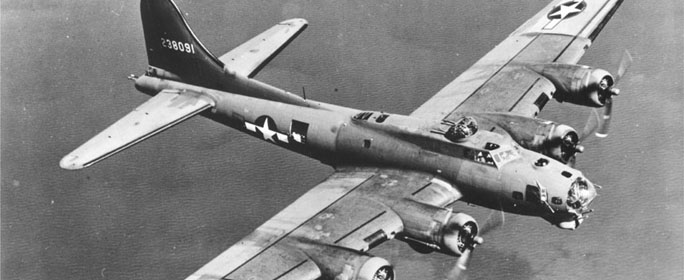
Pilots!
The evolution of the B-17 Flying Fortress had a profound effect on the Second World War in Europe. The B-17 saw service with the US Army Air Forces in Europe and the Pacific as a Strategic Bomber, and would see many different uses with the Royal Air Force. However, before its illustrious combat record cemented its position in military aviation history, it went through a series of prototype stages before becoming the iconic aircraft it is today.
In 1934, the US Army Air Corps (USAAC) had great interest in acquiring a new bomber, and issued a requirement for a new multi-engined, fast bomber that could carry at least 2,000 pounds of ordnance over a thousand miles. By 1935, three aircraft companies had answered the call: Boeing Aviation Company, the Glen L. Martin Aircraft Company, and the Douglas Aircraft Company.
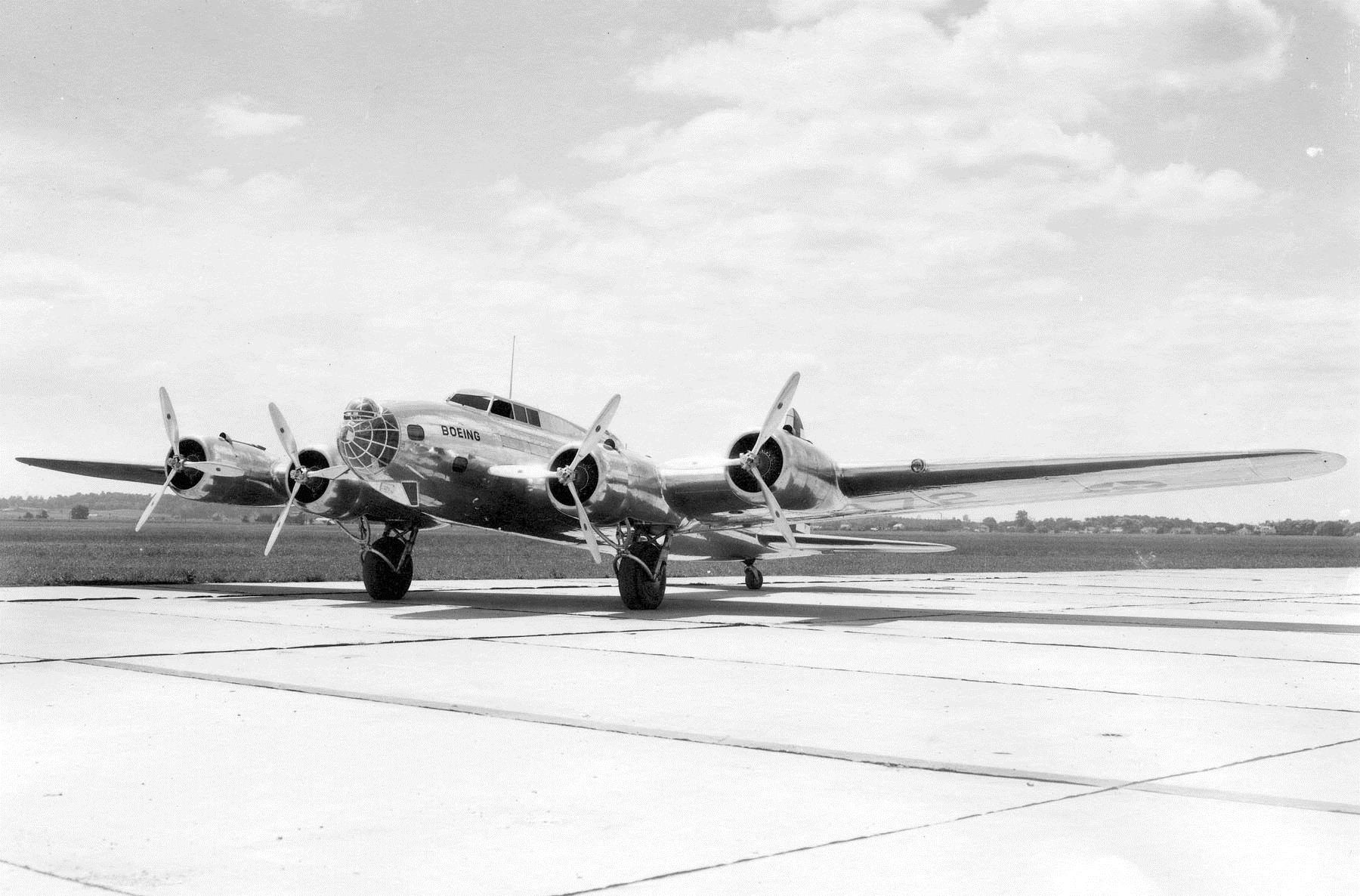 The standout entry was Boeing's Model 299. It was descended from two pre-existing Boeing designs, the Model 247 Airliner, and the XB-15, an earlier long-range bomber. Indeed, while the 299 bore a resemblance to both of these designs, it was an all-metal, four engine aircraft equipped with Pratt & Whitney R-1690 Hornets generating 750 horsepower each, and exceeded the Air Corps' requirements. The aircraft could carry 2,500 pounds of bombs out to a distance of 2,260 miles and return to base. It could travel at 232 miles per hour and was faster than any fighter of the day. It also had a heavy defensive armament (for the time) of five machine gun mounts which could carry either M2 .50-caliber machine guns or M1919 .30-caliber machine guns.
The standout entry was Boeing's Model 299. It was descended from two pre-existing Boeing designs, the Model 247 Airliner, and the XB-15, an earlier long-range bomber. Indeed, while the 299 bore a resemblance to both of these designs, it was an all-metal, four engine aircraft equipped with Pratt & Whitney R-1690 Hornets generating 750 horsepower each, and exceeded the Air Corps' requirements. The aircraft could carry 2,500 pounds of bombs out to a distance of 2,260 miles and return to base. It could travel at 232 miles per hour and was faster than any fighter of the day. It also had a heavy defensive armament (for the time) of five machine gun mounts which could carry either M2 .50-caliber machine guns or M1919 .30-caliber machine guns.
Unfortunately, the Model 299 prototype crashed during testing due to a control lock being left in place. The Army Air Corps decided to adopt the Douglas design, and it was designated the B-18 ‘Bolo.' However, Boeing wasn’t out of luck -- the USAAC General Staff was very impressed by the 299, and by "exploiting" a section in the Air Corps Charter concerning the procurement of experimental aircraft, the Air Corps ordered 13 improved Model 299s. These were given the USAAC designation Y1B-17. ‘Y1’ designated both their experimental and special procurement status.
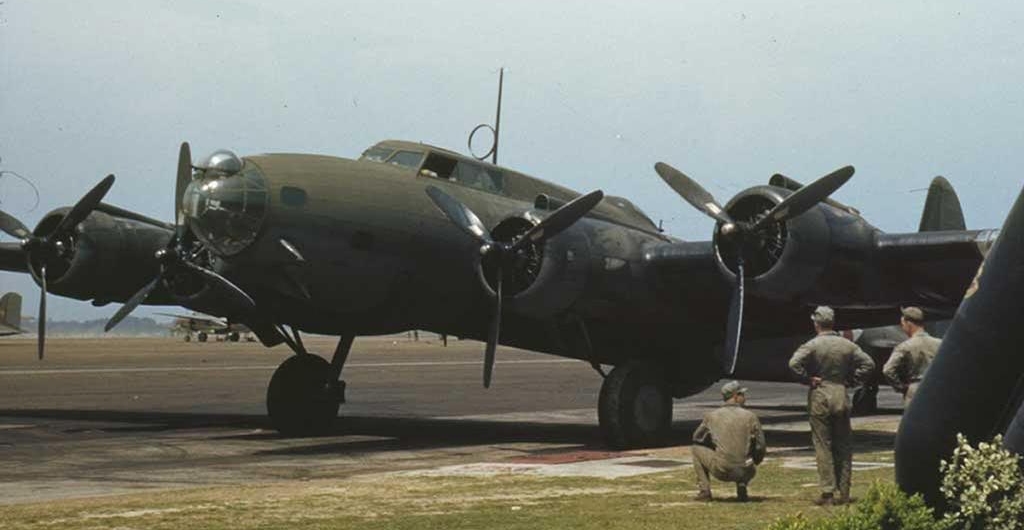
The Y1B-17 is visually very similar to the Model 299. Both aircraft feature roughly the same sleek airframe and both are of a low wing, monoplane design, equipped with four engines. However, the two key differences between the Y1B-17 and Model 299 was the undercarriage and the power plant. The Model 299 used a unique and complicated main landing gear design featuring collapsing yokes while the Y1B-17 used a much more simplified single strut design which became the standard for every subsequent model of B-17.
The Y1B-17 set the standard power plant configuration for every subsequent model of the Flying Fortress. The Pratt and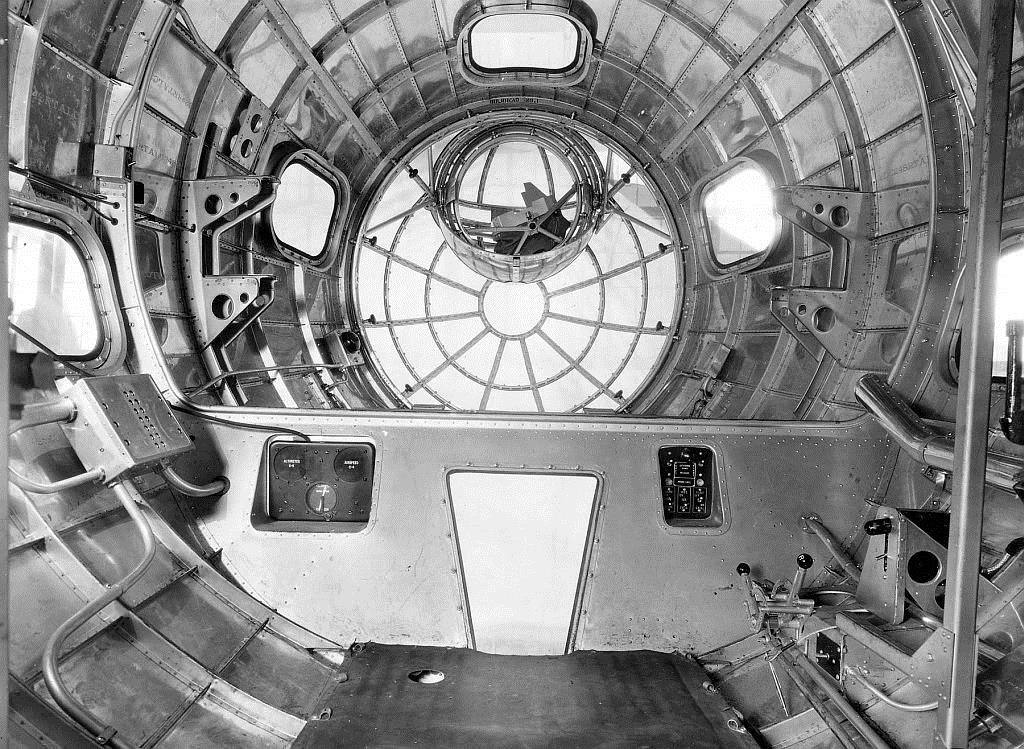 Whitney Hornets were exchanged for the Wright R-1820-39 Cyclone, which raised the horsepower to 930 per engine. Each engine turned a three-bladed variable pitch propeller. Variants of the Wright Cyclone would be used on every subsequent model of B-17 that saw service. Unique to the Y1B-17s were the addition of air intakes for the supercharger turbines. Placement of these structures varied throughout the aircraft’s service, and while the superchargers were retained, the intakes were deleted off of later models.
Whitney Hornets were exchanged for the Wright R-1820-39 Cyclone, which raised the horsepower to 930 per engine. Each engine turned a three-bladed variable pitch propeller. Variants of the Wright Cyclone would be used on every subsequent model of B-17 that saw service. Unique to the Y1B-17s were the addition of air intakes for the supercharger turbines. Placement of these structures varied throughout the aircraft’s service, and while the superchargers were retained, the intakes were deleted off of later models.
When the aircraft started flying in 1937, performance was quite good. The Y1B-17 had a service ceiling of 30,000 feet and could cruise at 175 miles per hour with a maximum speed of 256 miles per hour. It pushed the envelope further to a service ceiling of 38,000 feet, a cruising speed of 183 mph and a maximum speed of 295 mph. From the mid-to-late 1930s, this performance could only be described as insane. The YB-17A in particular was nearly as fast as any fighter in service with the Army Air Corps. What it couldn’t outrun, it could simply fly higher than.
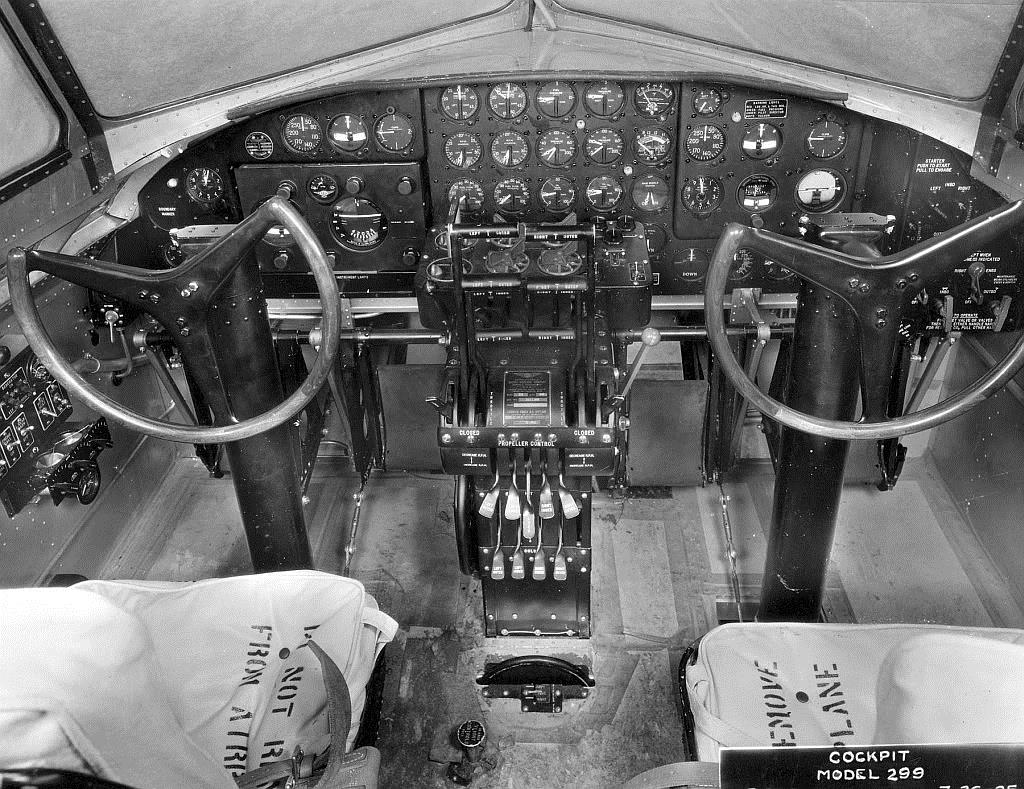 The flight deck contained seats for both the pilot and copilot, with the control configuration being carried over from the Model 299. The throttle quadrant, which operated all four engines, was located between the pilots as well as the relevant indicators for each of the engines. Each man was given their own set of controls to operate the aircraft. In combat operations, it was entirely possible for one man to fly the aircraft if required. Just behind the pilots was the space for the navigator which would later be moved to the nose of the aircraft.
The flight deck contained seats for both the pilot and copilot, with the control configuration being carried over from the Model 299. The throttle quadrant, which operated all four engines, was located between the pilots as well as the relevant indicators for each of the engines. Each man was given their own set of controls to operate the aircraft. In combat operations, it was entirely possible for one man to fly the aircraft if required. Just behind the pilots was the space for the navigator which would later be moved to the nose of the aircraft.
The bomb bay was retained from the Model 299 and actually never really changed with any subsequent model of B-17. Bombs were located on racks on each side of the walkway and large removable fuel tanks could be fitted in the bomb bay for ferry flights depending on the situation.
The radio room/flight engineering station is rather unique to the Y1B-17 as well. On later variants, the flight engineer duty 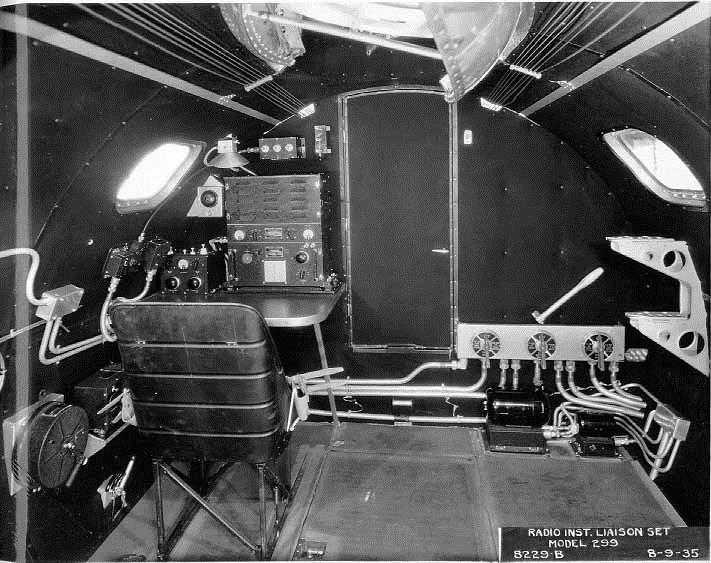 was performed by a separate crewman located on the flight deck. There was a gun blister located on the roof, above the radioman/engineer. Behind this section was the rear fuselage which was home to the ventral gunner and the two waist gunners, as well as their respective gun blisters.
was performed by a separate crewman located on the flight deck. There was a gun blister located on the roof, above the radioman/engineer. Behind this section was the rear fuselage which was home to the ventral gunner and the two waist gunners, as well as their respective gun blisters.
The fuselage gun blisters were a rather unique feature on the early B-17 models. Like the nose turret, they appeared to have been carried over from the XB-15 prototype. These teardrop-shaped mounts could fit either a flexible mount .50 or .30 caliber machine gun in a ring-shaped fixture. This would allow the gun to roll along the ring mounting, as well as rotate allowing the gunner to sweep his machine gun horizontally. The entire blister could also pitch to allow for vertical movement. This was of course somewhat reversed for the dorsal and ventral gun mounts, where the ring rotated for vertical movement and the blister rotated for horizontal movement.
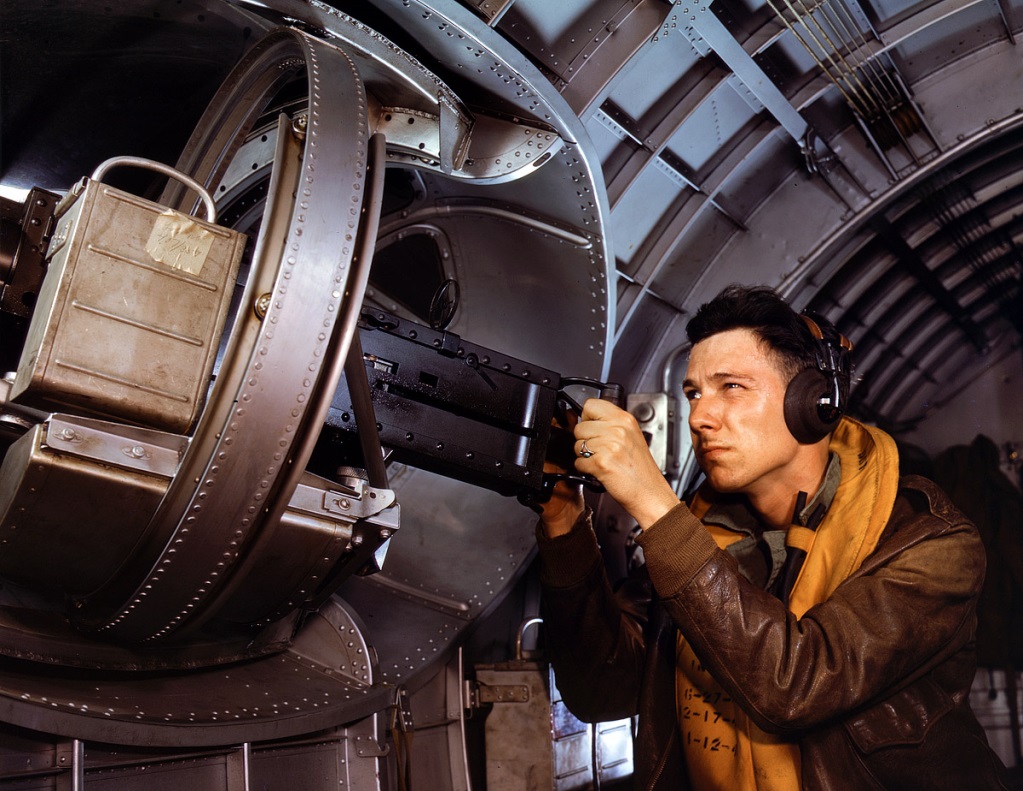 Since the guns were mounted inside the blisters, there wasn’t any room for an ammunition belt, and the guns were fed by 200-round detachable belt holders which fit over the top of the gun. Additional ammunition holders were kept inside the cabin, near each of the gun mounts. Despite looking pretty cool, the bizarre turrets were both heavy and needlessly complicated, and would later be removed starting with the B-17C.
Since the guns were mounted inside the blisters, there wasn’t any room for an ammunition belt, and the guns were fed by 200-round detachable belt holders which fit over the top of the gun. Additional ammunition holders were kept inside the cabin, near each of the gun mounts. Despite looking pretty cool, the bizarre turrets were both heavy and needlessly complicated, and would later be removed starting with the B-17C.
The Y1B-17s represented the first models of the legendary B-17 Flying Fortress design to enter service with the USAAC. The Y1B-17 was the only model that never saw action against either the Japanese or the German armed forces. Three, however, did demonstrate the effectiveness of the long-range bomber concept when a flight of three B-17s were able to locate and intercept the Italian Ocean Liner Rex in foul weather, some 800 miles off of the coast of New York, much to the US Navy’s chagrin. The lead navigator on the mission was future USAAF/USAF General Curtis LeMay. The Y1B-17 was also featured in the 1938 film ‘Test Pilot,’ starring future B-17 crewman Clark Gable.
 |
 |
 |